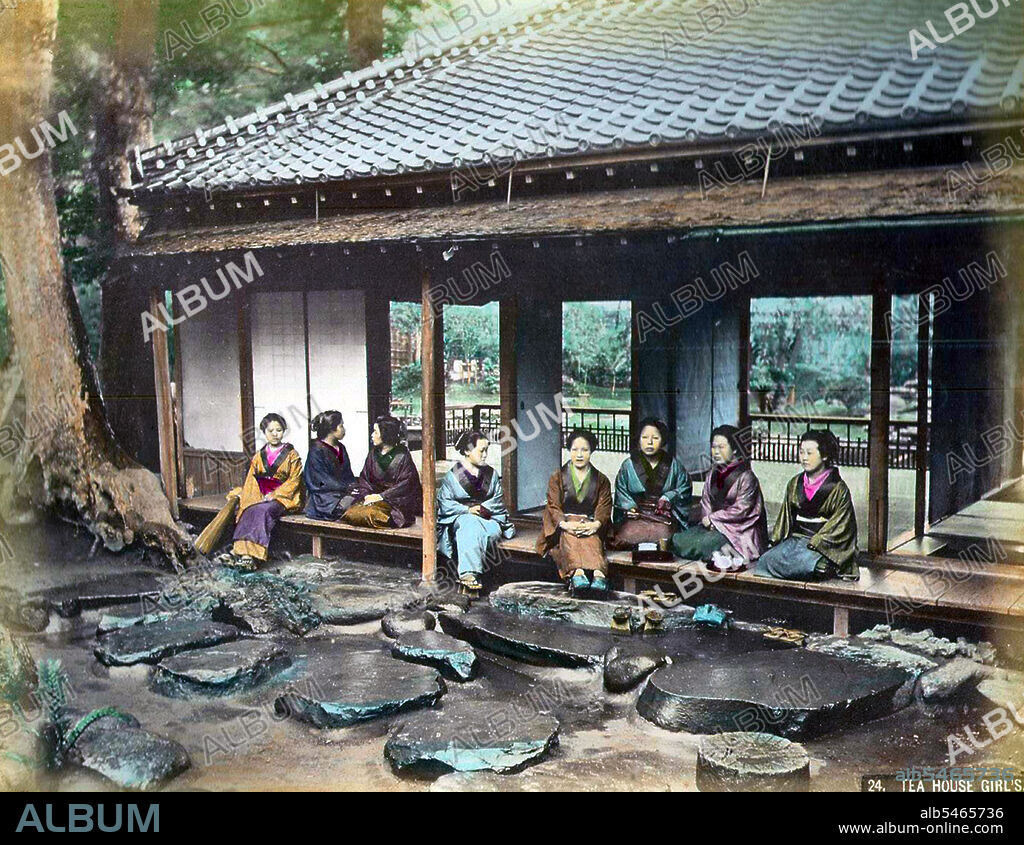alb5465736
Tea House Girls' at a tea pavilion in a park, c. 1900.

|
Zu einem anderen Lightbox hinzufügen |
|
Zu einem anderen Lightbox hinzufügen |



Haben Sie bereits ein Konto? Anmelden
Sie haben kein Konto? Registrieren
Dieses Bild kaufen.
Nutzung auswählen:

Titel:
Tea House Girls' at a tea pavilion in a park, c. 1900.
Untertitel:
Automatische Übersetzung: Die japanische Teezeremonie, auch Weg des Tees genannt, ist eine japanische kulturelle Aktivität, bei der Matcha, pulverisierter grüner Tee, zeremoniell zubereitet und präsentiert wird. Auf Japanisch heißt es Chanoyu oder Chadi, Sadi. Die Art und Weise, wie es ausgeführt wird, oder die Kunst seiner Ausführung, wird Otemae genannt. Zen-Buddhismus war ein Haupteinfluss in der Entwicklung der Teezeremonie. Teetreffen werden als Chakai oder Chaji klassifiziert. Ein Chakai ist ein relativ einfacher Kurs der Gastfreundschaft, der Süßigkeiten, dünnen Tee und vielleicht eine leichte Mahlzeit umfasst. Ein Chaji ist eine viel formellere Versammlung, die normalerweise ein komplettes Kaiseki-Menü umfasst, gefolgt von Konfekt, dickem Tee und dünnem Tee. Ein Chaji kann bis zu vier Stunden dauern.
The Japanese tea ceremony, also called the Way of Tea, is a Japanese cultural activity involving the ceremonial preparation and presentation of matcha, powdered green tea. In Japanese, it is called chanoyu or chadi, sadi. The manner in which it is performed, or the art of its performance, is called otemae. Zen Buddhism was a primary influence in the development of the tea ceremony. Tea gatherings are classified as chakai or chaji. A chakai is a relatively simple course of hospitality that includes confections, thin tea, and perhaps a light meal. A chaji is a much more formal gathering, usually including a full-course kaiseki meal followed by confections, thick tea, and thin tea. A chaji can last up to four hours.
Bildnachweis:
Album / Pictures From History/Universal Images Group
Freigaben (Releases):
Bildgröße:
4761 x 3683 px | 50.2 MB
Druckgröße:
40.3 x 31.2 cm | 15.9 x 12.3 in (300 dpi)
Schlüsselwörter:
ASIEN • ASIEN, KONTINENT • FRAU • FRAUEN • GESCHICHTE • JAPAN • JAPANER • JAPANERIN • JAPANISCH • KIMONO • KIMONOS • KONTINENT, ASIEN • MODE • ORMNAMENT: JAPANISCH • STIL • TEEZEREMONIE • WEIBCHEN • WOMAN • ZEITGESCHICHTE
 Pinterest
Pinterest Twitter
Twitter Facebook
Facebook Link kopieren
Link kopieren Email
Email
